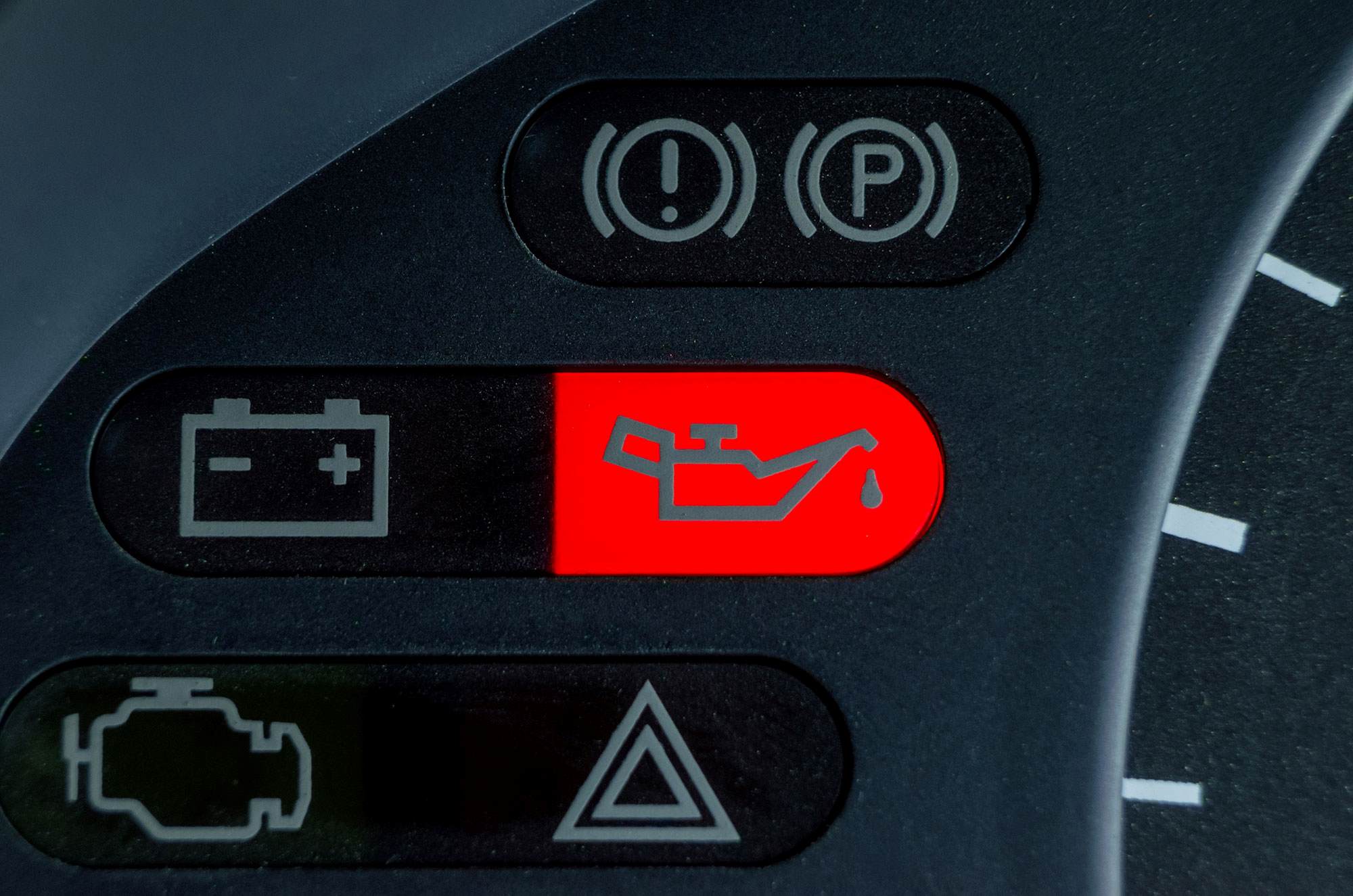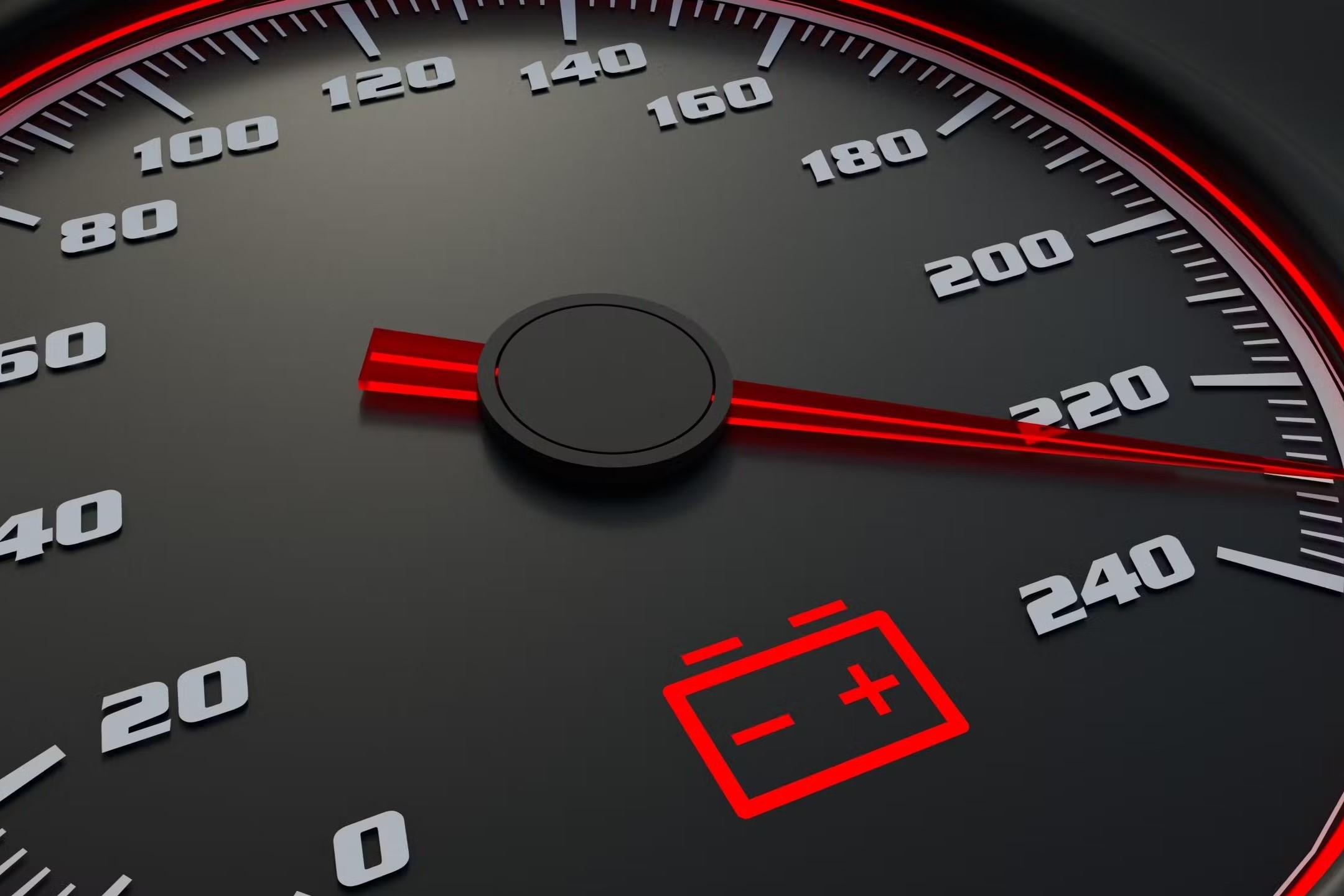Home>Automotive>The Surprising Reason Your Vehicle Thumps At Specific Speeds


Automotive
The Surprising Reason Your Vehicle Thumps At Specific Speeds
Published: January 8, 2024
Discover the surprising reason why your vehicle thumps at specific speeds. Get expert automotive insights and solutions.
(Many of the links in this article redirect to a specific reviewed product. Your purchase of these products through affiliate links helps to generate commission for Noodls.com, at no extra cost. Learn more)
Table of Contents
Introduction
Have you ever experienced that unsettling thumping sensation when driving at specific speeds? It's a common issue that can be quite perplexing. Whether you're cruising down the highway or navigating through city streets, a rhythmic thumping or pulsating feeling can detract from the smoothness of your ride. This phenomenon often leaves drivers scratching their heads, wondering about the underlying cause. Fortunately, understanding the factors contributing to this unusual sensation can help you address the issue effectively.
In this comprehensive guide, we'll delve into the surprising reasons behind your vehicle's thumping at specific speeds. By exploring the various components and systems that can contribute to this sensation, you'll gain valuable insights into potential culprits. From tire wear and suspension issues to wheel alignment problems, we'll uncover the factors that may be responsible for the unsettling thumping sensation in your vehicle. So, fasten your seatbelt and let's embark on a journey to unravel the mysteries behind this common automotive concern.
Understanding Vehicle Thumping
When your vehicle thumps at specific speeds, it can be an unsettling and disconcerting experience. This phenomenon is often indicative of underlying issues within the vehicle's components and systems. Understanding the potential sources of this thumping sensation is crucial for diagnosing and resolving the problem effectively.
One of the primary factors contributing to vehicle thumping is tire-related issues. Irregular tire wear, such as uneven tread patterns or tire deformation, can lead to rhythmic thumping as the tires make contact with the road surface. Additionally, imbalanced or improperly inflated tires can exacerbate this problem, causing noticeable vibrations and thumping sensations, particularly at specific speeds.
Another key aspect to consider is the vehicle's suspension system. Worn-out shocks, struts, or suspension components can result in an uneven and jarring ride, leading to thumping sensations as the vehicle traverses over bumps or irregular road surfaces. Furthermore, damaged or deteriorated suspension bushings can introduce excessive play and movement, contributing to the perceptible thumping when driving at certain speeds.
Furthermore, wheel alignment issues can also manifest as thumping sensations in a vehicle. Misaligned wheels can cause uneven tire wear and compromised handling, resulting in rhythmic thumping as the misaligned tires interact with the road surface. This misalignment-induced thumping is often more pronounced at specific speeds, highlighting the impact of wheel alignment on ride quality.
In summary, the understanding of vehicle thumping encompasses a multifaceted approach that considers tire wear, suspension integrity, and wheel alignment. By recognizing these potential sources of the thumping sensation, drivers can take proactive measures to address the underlying issues, ensuring a smoother and more comfortable driving experience.
The Role of Tire Wear
Tire wear plays a pivotal role in the manifestation of thumping sensations in a vehicle, often serving as a primary culprit behind this disconcerting phenomenon. Irregular tire wear patterns can lead to noticeable thumping at specific speeds, causing discomfort and detracting from the overall driving experience. Understanding the intricate relationship between tire wear and thumping sensations is essential for effectively addressing this common automotive concern.
One of the key contributors to thumping sensations stemming from tire wear is uneven tread patterns. Over time, tires can exhibit irregular wear, resulting in uneven tread depths across the tire surface. This uneven tread wear can lead to rhythmic thumping as the tires make contact with the road, creating a palpable sensation that resonates throughout the vehicle. Moreover, tire deformation, such as flat spots or bulges, can exacerbate this thumping, further compromising ride comfort and stability.
Additionally, imbalanced or improperly inflated tires can significantly contribute to thumping sensations. Uneven tire pressure or imbalance can lead to uneven tire contact with the road surface, resulting in vibrations and thumping at specific speeds. This imbalance-induced thumping can be particularly pronounced, causing a noticeable and disconcerting sensation that permeates the driving experience.
Furthermore, the impact of tire wear on thumping sensations underscores the importance of regular tire maintenance and inspection. By monitoring and addressing uneven tread wear, tire deformation, and imbalanced tire conditions, drivers can mitigate the risk of experiencing thumping sensations due to tire-related issues. Additionally, adhering to recommended tire rotation schedules and maintaining proper tire pressure can help prevent uneven wear patterns and imbalances, promoting a smoother and more comfortable driving experience.
In essence, the role of tire wear in contributing to thumping sensations in a vehicle is undeniable. By recognizing the influence of uneven tread patterns, tire deformation, and imbalanced tire conditions, drivers can prioritize proactive tire maintenance and care, minimizing the likelihood of experiencing unsettling thumping at specific speeds. This proactive approach not only enhances ride comfort but also promotes optimal tire performance and longevity, underscoring the significance of tire wear management in mitigating thumping sensations.
Suspension Issues
Suspension issues represent a significant contributing factor to the unsettling thumping sensations experienced in vehicles at specific speeds. The suspension system plays a crucial role in maintaining ride comfort, stability, and handling, making it essential to address any potential issues that can lead to noticeable thumping.
Worn-out shocks and struts are common culprits behind thumping sensations in vehicles. Over time, these components can deteriorate, resulting in diminished damping capabilities and compromised ride quality. As the vehicle traverses over bumps and uneven road surfaces, worn shocks and struts fail to effectively absorb and dampen the resulting impacts, leading to pronounced thumping sensations. This can be particularly evident at specific speeds, highlighting the impact of deteriorated suspension components on ride smoothness.
Moreover, damaged or deteriorated suspension bushings can contribute to thumping sensations. These vital components play a pivotal role in maintaining the stability and integrity of the suspension system. When bushings wear out or become damaged, excessive play and movement can occur within the suspension, leading to noticeable thumping as the vehicle navigates over varying road conditions. The resulting lack of stability and control can manifest as rhythmic thumping, detracting from the overall driving experience.
Additionally, compromised suspension integrity can lead to uneven and jarring ride characteristics, exacerbating thumping sensations. When suspension components exhibit excessive wear or damage, the vehicle's ability to effectively absorb and mitigate road imperfections is compromised, resulting in pronounced thumping at specific speeds. This can not only diminish ride comfort but also impact overall vehicle handling and stability.
Addressing suspension issues is crucial for mitigating thumping sensations and ensuring a smoother driving experience. Regular inspection and maintenance of shocks, struts, and suspension components are essential for identifying and addressing potential wear or damage. By proactively addressing worn or damaged suspension components, drivers can minimize the risk of experiencing unsettling thumping sensations and promote optimal ride comfort and stability.
In essence, the role of suspension issues in contributing to thumping sensations underscores the significance of maintaining a well-functioning suspension system. By addressing worn shocks, struts, and suspension bushings, drivers can mitigate the likelihood of experiencing pronounced thumping at specific speeds, enhancing overall ride quality and driving satisfaction.
Wheel Alignment Problems
Wheel alignment problems can significantly contribute to the unsettling thumping sensations experienced in vehicles at specific speeds. The precise alignment of the wheels plays a crucial role in ensuring optimal tire performance, vehicle stability, and ride comfort. When wheel alignment becomes compromised, a myriad of issues can arise, ultimately leading to noticeable thumping and vibrations that detract from the overall driving experience.
Misaligned wheels can manifest as uneven tire wear, causing irregular tread patterns that result in rhythmic thumping as the tires make contact with the road surface. This uneven wear, often characterized by excessive wear on certain areas of the tire, can lead to palpable vibrations and thumping sensations, particularly at specific speeds. Additionally, misaligned wheels can exert uneven forces on the tires, resulting in compromised handling and stability, further exacerbating the thumping phenomenon.
Furthermore, misaligned wheels can lead to steering drift and compromised vehicle control, contributing to pronounced thumping at specific speeds. As the vehicle struggles to maintain a straight trajectory due to misaligned wheels, noticeable vibrations and thumping can permeate the driving experience, diminishing ride comfort and stability. This misalignment-induced thumping can be particularly disconcerting, highlighting the critical role of precise wheel alignment in ensuring a smooth and enjoyable driving experience.
Moreover, misaligned wheels can introduce excessive stress on suspension components, further exacerbating thumping sensations. The resulting strain on the suspension system can lead to uneven and jarring ride characteristics, causing noticeable thumping as the vehicle navigates over varying road conditions. This underscores the far-reaching impact of wheel alignment problems on overall ride quality and driving satisfaction.
Addressing wheel alignment problems is essential for mitigating thumping sensations and promoting optimal vehicle performance. Regular wheel alignments can help ensure that the wheels are precisely positioned according to manufacturer specifications, minimizing the risk of uneven tire wear and compromised handling. By proactively addressing wheel alignment issues, drivers can enhance ride comfort, stability, and tire longevity, ultimately minimizing the likelihood of experiencing unsettling thumping at specific speeds.
In essence, the significance of wheel alignment problems in contributing to thumping sensations underscores the importance of maintaining proper wheel alignment for a smoother and more enjoyable driving experience. By prioritizing regular wheel alignments and promptly addressing any misalignment issues, drivers can mitigate the impact of thumping sensations, promoting optimal ride comfort and vehicle performance.
Conclusion
In conclusion, the unsettling thumping sensations experienced in vehicles at specific speeds can be attributed to a myriad of factors, ranging from tire wear and suspension issues to wheel alignment problems. Understanding the multifaceted nature of these contributing factors is essential for effectively addressing and mitigating thumping sensations, ultimately promoting a smoother and more enjoyable driving experience.
Tire wear emerges as a prominent contributor to thumping sensations, with uneven tread patterns, tire deformation, and imbalanced tire conditions playing pivotal roles. By recognizing the impact of tire wear on ride comfort and stability, drivers can prioritize proactive tire maintenance, including regular inspections, proper tire rotation, and adherence to recommended tire pressure levels. This proactive approach can minimize the likelihood of experiencing unsettling thumping at specific speeds, promoting optimal tire performance and longevity.
Furthermore, the role of suspension issues in contributing to thumping sensations underscores the significance of maintaining a well-functioning suspension system. Addressing worn shocks, struts, and suspension bushings through regular inspection and maintenance is crucial for mitigating thumping sensations and ensuring a smoother driving experience. By proactively addressing potential wear or damage within the suspension system, drivers can enhance overall ride quality and vehicle stability.
Additionally, wheel alignment problems can exert a profound impact on thumping sensations, underscoring the critical role of precise wheel alignment in promoting a smooth and enjoyable driving experience. Regular wheel alignments can help minimize the risk of uneven tire wear, compromised handling, and misalignment-induced thumping, ultimately enhancing ride comfort and vehicle performance.
In essence, by recognizing the interplay of tire wear, suspension integrity, and wheel alignment in contributing to thumping sensations, drivers can take proactive measures to address these underlying issues. Through regular maintenance, timely inspections, and adherence to recommended guidelines, drivers can minimize the likelihood of experiencing unsettling thumping at specific speeds, ensuring a more comfortable and enjoyable driving experience for themselves and their passengers.














